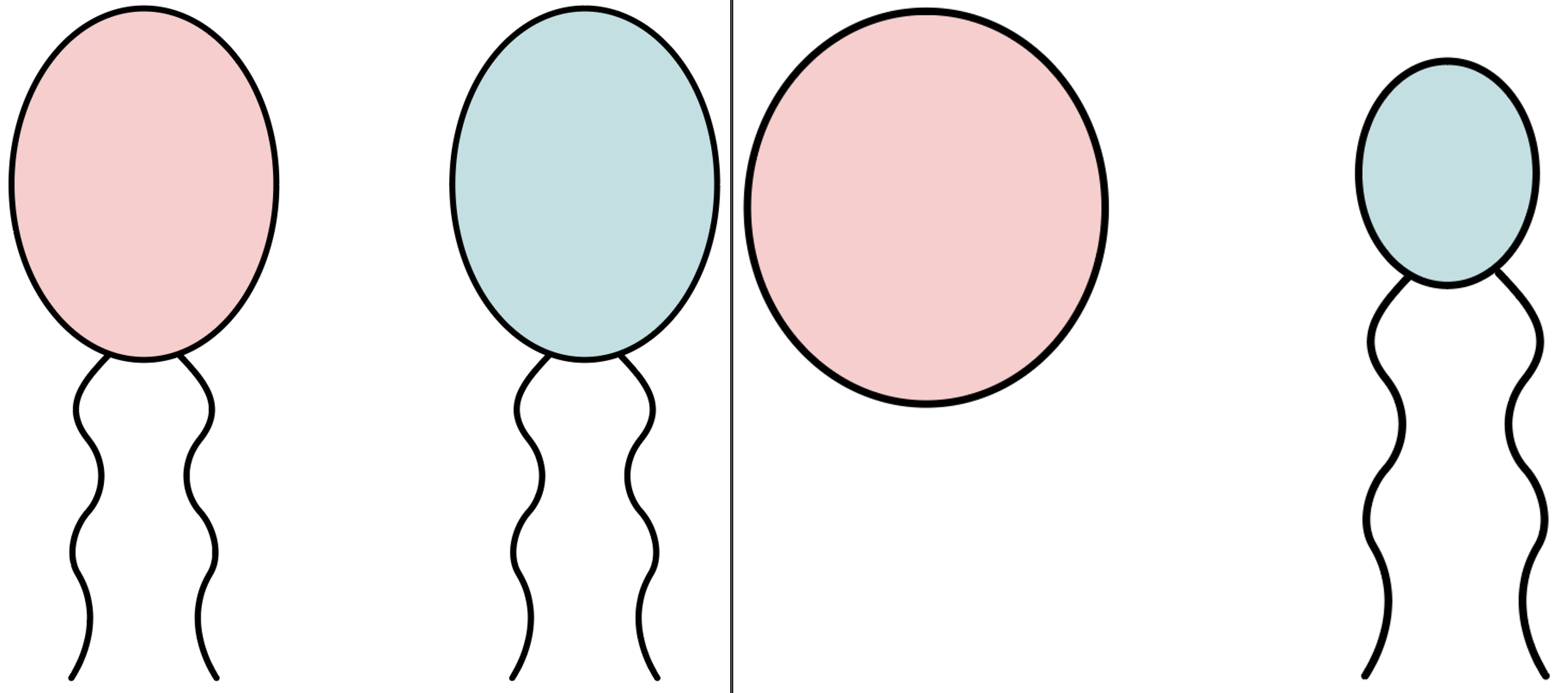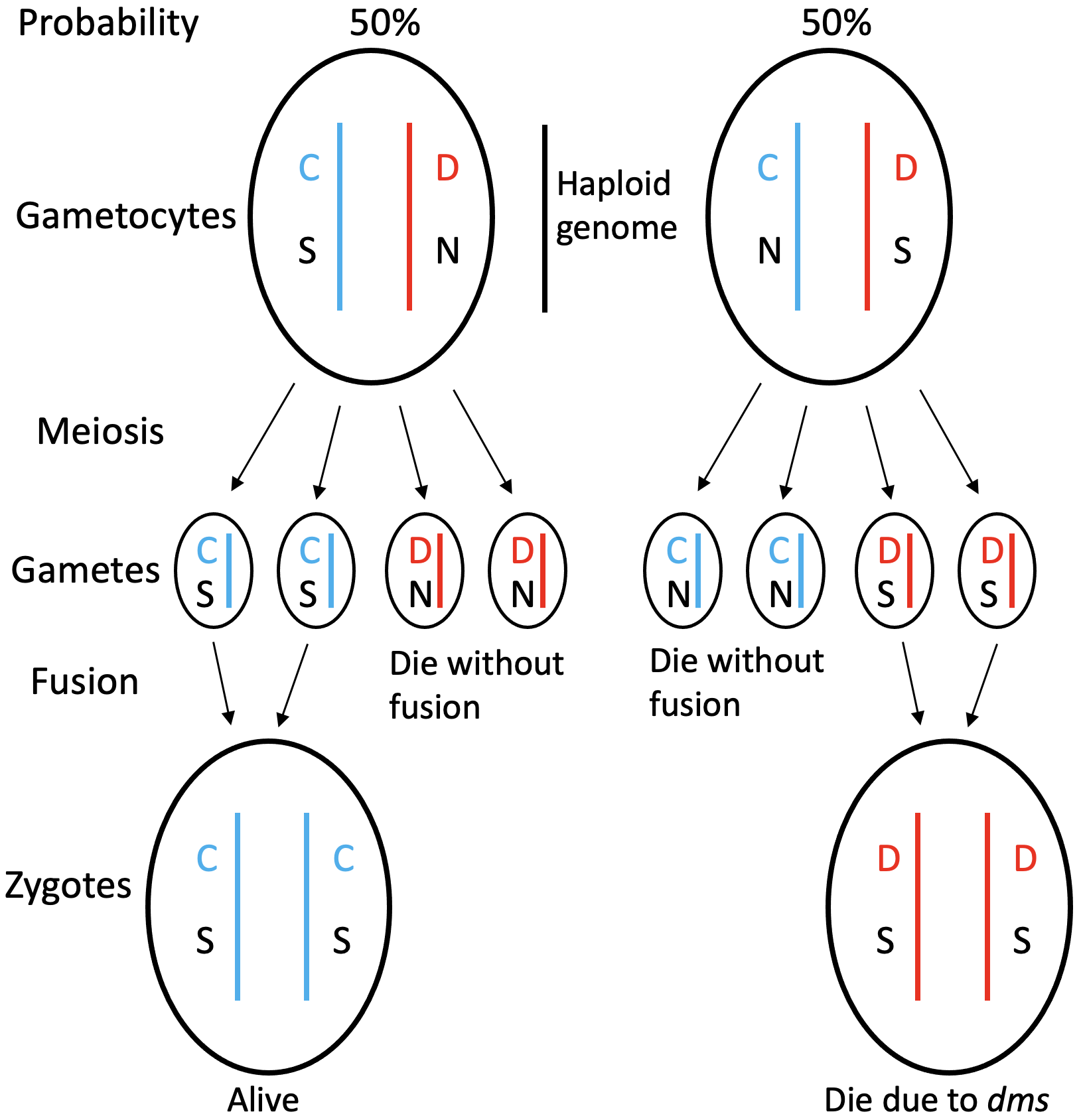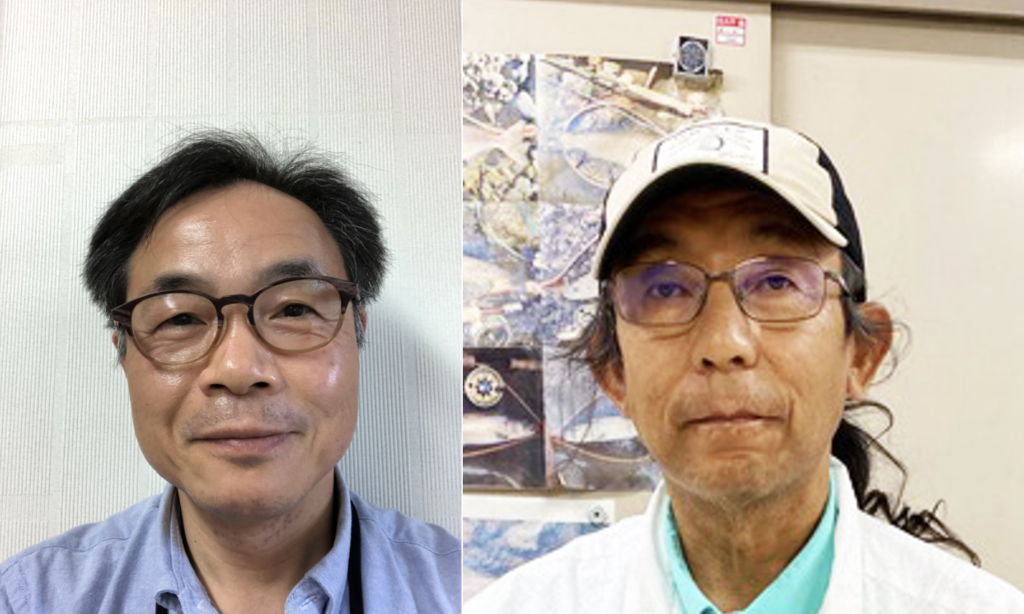Joint release by Hokkaido University and Kagawa University.
Two novel hypotheses have been proposed that address the "two-fold cost of sex": one of the biggest enigmas in the evolution of sexual reproduction.

Female (pink) and male (blue) isogamous gametes (left panel) are morphologically similar while the female and male anisogamous gametes (right panel) are morphologically distinct (Qef/Wikimedia Commons).
The evolution of sexual reproduction in living beings is one of the biggest mysteries in biology. There are two known modes of reproduction: asexual, where the organism creates clones of itself, and sexual, where gametes from two individuals fuse to give rise to progeny. There are many hypotheses that address various aspects of the evolution of sexual reproduction; nonetheless, there are also many questions that are still unanswered.
The biggest question in the study of the evolution of sexual reproduction is the question of cost. Sexual reproduction requires exponentially more energy than asexual reproduction. Nevertheless, sexual reproduction has two major advantages over asexual reproduction: it results in genetic diversity in offspring, and it eliminates harmful mutations.
Associate Professor Eisuke Hasegawa of Hokkaido University and Associate Professor Yukio Yasui of Kagawa University have proposed and modeled two novel hypotheses which address two open questions in the study of the evolution of sexual reproduction. Their hypotheses were published in the Journal of Ethology.
The researchers proposed hypotheses to address the "two-fold cost of sex": the cost of meiosis and the cost of producing large numbers of male gametes. Sexual reproduction can be isogamous, where the gametes are all of the same size, or it can be anisogamous, where the female gametes are large, while the male gametes are small and numerous. The hypotheses were tested by computer modelling.
The first hypothesis they proposed is the "seesaw effect" by which a large number of harmful mutations are eliminated. The first individual to have a sex-controlling gene-that allowed for meiosis to occur-produced four gametes. Only gametes with the sex-controlling gene could fuse, fixing it in the population and erasing the cost of meiosis. In addition, any harmful mutations were diluted or discarded depending on whether they were associated with the sex-controlling gene.

Each gametocyte gives rise to four gametes. During the first sexual reproduction event, only gametes with the sex-controlling mutation (S) could fuse to form zygotes. Thus, the harmful mutations (D) were eliminated (die due to dms) or were diluted (not shown). In addition, the sex controlling mutation was fixed in the population (Yukio Yasui, Eisuke Hasegawa. Journal of Ethology. August 19, 2022).
The second hypothesis, the development of anisogamy via "inflated isogamy," was developed from the first hypothesis. They suggest that, originally, multicellular organisms with higher energy generation evolved; then, the gamete size increased ("inflated isogamy") as the increased resources in larger gametes increased the survival rate of offspring. Then, the male gametes reduced in size to fertilize more female gametes-depending on the inflated female gametes to provide the resources for survival. This strategy does not involve any extra cost on the part of the female; in fact, it may have triggered their counteradaptation to the current-day meiosis in females that results in just one female gamete (the oocyte) per gametocyte.
With these hypotheses, the authors have addressed the question of "two-fold cost of sex", and have also hypothesized that the first sexual reproduction required only one individual, and was a self-fertilizing event. However, the two hypotheses are still in their initial stages, and further work is required to address specific assumptions and conclusions underlying them.

Yukio Yasui (left) and Eisuke Hasegawa (right), authors of the study (Photo: Yukio Yasui, Eisuke Hasegawa).
Original Article:
Yukio Yasui, Eisuke Hasegawa. The origination events of gametic sexual reproduction and anisogamy. Journal of Ethology. August 19, 2022.
DOI: 10.1007/s10164-022-00760-3
Funding:
This work was partly supported by the Ministry of Education, Culture, Sports Science and Technology of Japan (MEXT) Grants-in-Aid (26440241, 19K06839, 21K19116, 18H02502, 19H0296400).






